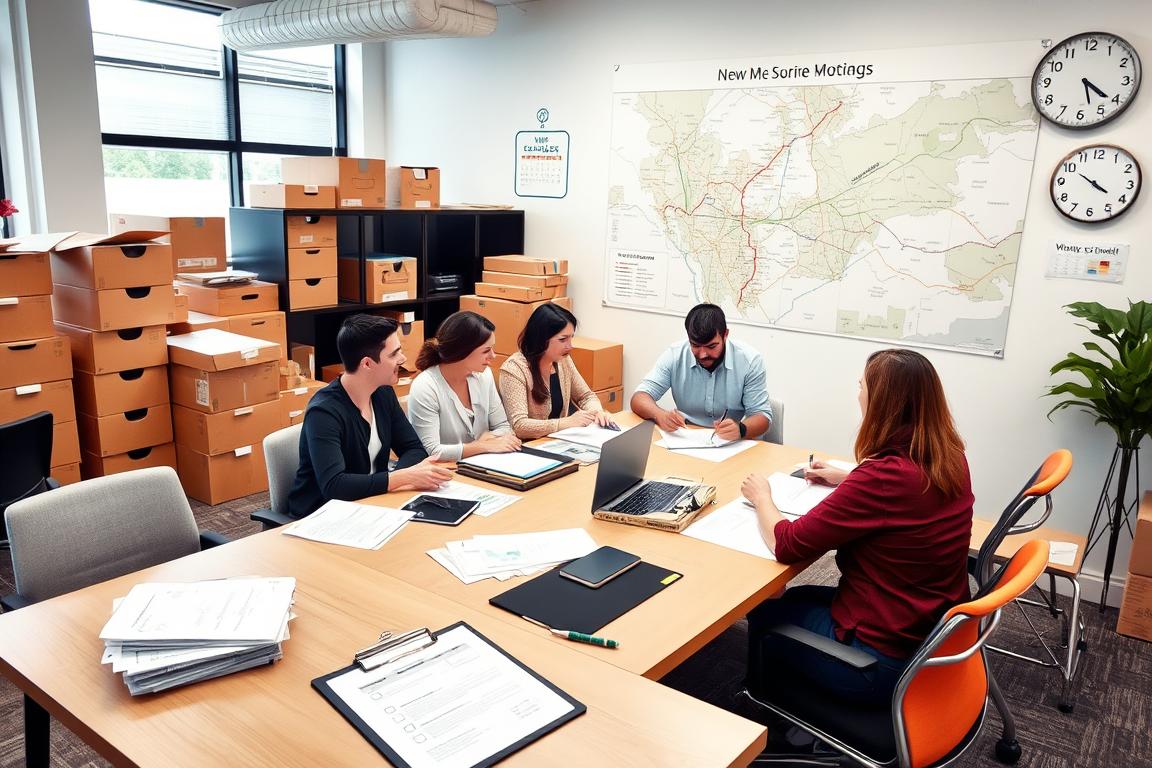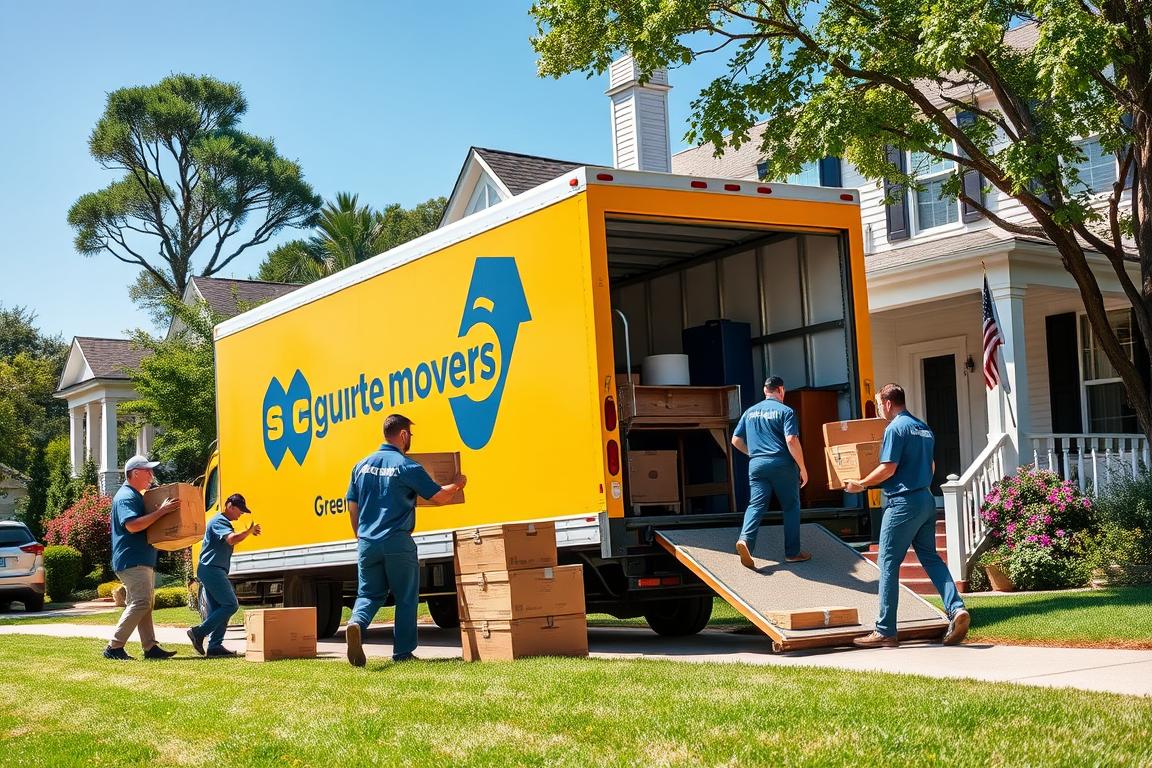In today’s fast-paced business environment, the need for efficient and expert Commercial Moving Services is more critical than ever. Business relocation involves much more than just moving office furniture; it requires meticulous planning and execution to minimize disruption to day-to-day operations. Whether you’re relocating a small office or an expansive corporate environment, understanding the nuances of office moving can significantly enhance your transition experience.
Statistics reveal that companies opting for professional commercial relocation often report less downtime and reduced operational costs during their move. This highlights the value of investing in seasoned moving experts who can provide comprehensive solutions tailored to your unique needs. By recognizing the importance of these services, business leaders can ensure a smoother, more efficient relocation process.
Understanding the Importance of Professional Commercial Moving Services
When it comes to relocating a business, understanding the importance of professional movers can significantly impact the overall success of the move. Opting for experts in the field not only saves valuable time but also mitigates various risks associated with moving. Engaging business relocation experts ensures that the entire process proceeds smoothly, allowing you to maintain focus on your core operations.
Why Choose Professionals for Your Business Relocation?
Many businesses consider managing a move in-house to save costs. While this may seem to be a viable option, it often lacks the expertise crucial for handling unforeseen challenges. Professional movers bring experience and knowledge that can prevent delays and minimize disruption. They understand the logistics of a commercial move and can navigate issues that may arise, ensuring a seamless transition.
Benefits of Hiring Commercial Moving Experts
The commercial move benefits of hiring professional movers are numerous and impactful. By utilizing their services, businesses can achieve:
- Minimized risk of damage to equipment and furniture
- Efficient packing and unpacking processes
- Adherence to safety regulations during the move
- Access to specialized equipment for heavy or delicate items
- Time savings that can be redirected towards business operations
How Professional Moving Companies Streamline the Process
Professional moving companies excel in creating a streamlined moving process that enhances efficiency. They utilize advanced planning techniques, coordinated logistics, and modern technology to execute moves skillfully. This approach leads to a reduction in downtime and an overall smoother transition. With skilled movers at the helm, businesses can trust that their relocation will be managed effectively, allowing them to get back to their normal operations without significant interruptions.
| Factors | In-house Move | Professional Movers |
|---|---|---|
| Experience Level | Limited | Expertise Present |
| Equipment Provided | Basic Tools | Specialized Equipment |
| Time Efficiency | Often Delayed | Streamlined Process |
| Risk of Damage | Higher | Minimized |
| Focus on Core Business | Divided Attention | Uninterrupted |
Planning Your Commercial Move: Essential Steps to Follow
Effective Commercial Move Planning requires several essential steps to ensure a seamless transition. A structured approach helps in managing time and resources efficiently. By focusing on a moving timeline, assessing the office space, and preparing a detailed inventory, businesses can minimize disruptions and streamline the relocation process.
Creating a Detailed Moving Timeline
A well-structured moving timeline serves as the backbone of any successful commercial move. This timeline outlines key milestones such as notifying employees, scheduling the moving date, and updating addresses. By setting clear deadlines for each task, businesses can maintain organization throughout the process. Consider the following factors when creating your timeline:
- Set a moving date that accommodates your business schedule.
- Allocate time for packing, labeling, and transportation.
- Include buffer periods for unexpected delays.
Assessing Your Office Space and Needs
Conducting an Office Space Assessment is crucial for determining the requirements of the new location. Businesses should evaluate the layout, amenities, and functionality of the proposed space to ensure it meets future needs. Key aspects to consider include:
- Number of employees and their workstations.
- Availability of meeting rooms and collaborative spaces.
- Infrastructure and technology requirements.
Preparing an Inventory of Office Equipment and Furniture
Inventory Preparation is vital for managing logistics during the move. An organized inventory not only tracks items but also aids in planning for transport and reassembly in the new office. It is advisable to categorize inventory by type, such as:
| Category | Item Description | Quantity |
|---|---|---|
| Furniture | Desks | 10 |
| Furniture | Chairs | 20 |
| Electronics | Computers | 15 |
| Electronics | Monitors | 15 |
| Equipment | Printers | 5 |

Commercial Moving: Strategies for a Smooth Transition
Transitioning to a new business location can seem overwhelming, but implementing effective strategies can lead to a seamless experience. One of the critical Smooth Transition Strategies involves clear and consistent communication throughout the moving process. Ensuring that all team members are informed about their roles and responsibilities can prevent confusion and delays, making it easier to navigate the challenges that come with relocating.
Effective Communication During the Moving Process
Establishing a well-defined communication plan is essential for efficient Moving Process Communication. Regular updates via team meetings or digital communication tools can help keep everyone engaged and allow for quick resolutions to any emerging issues. This transparency fosters an environment where staff feels confident in their contributions, which is vital for a successful move.
Utilizing Technology to Enhance Efficiency
Technology in Moving has the potential to revolutionize the relocation experience. Utilizing project management software can streamline task assignments, while inventory tracking tools ensure that all items are accounted for as they move from one location to another. These digital resources not only enhance efficiency but also provide valuable insights into the moving process, reducing the likelihood of errors and miscommunications.
Minimizing Downtime During Your Move
Reducing Downtime is crucial for maintaining business continuity during a move. Consider scheduling your moving activities during off-peak business hours or weekends to minimize disruptions. Implementing expedited packing techniques can also ensure that essential operations resume quickly at the new location. With the right approach, businesses can significantly reduce the impact of a move on their day-to-day functions.



